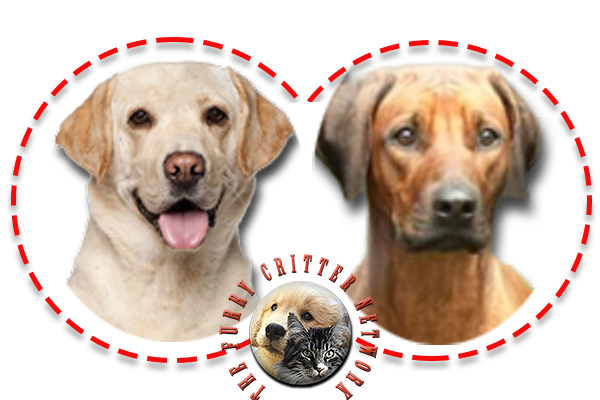Behavior
This king of retrievers is highly active, agile, confident, and tenacious. Sometimes called the "pointer of retrievers", he has a remarkably keen nose and is an excellent swimmer. He can retrieve all sorts of game on land and in the water. With his vast visual memory, he can recall the locations of several fallen birds. A tenacious tracker, he is a good bloodhound on the trail of wounded large game. Very even-tempered and never aggressive, he has a delightful personality that makes him a wonderful pet. He needs firm and gentle training.
He does not like being left alone. He needs lots of exercise to curb his restlessness. He must be brushed two to three times per week and combed during shedding season.
Function
Labrador Retrievers have proven to have a high success rate at becoming guide dogs. A study was recently done on how well four different breeds (Labrador Retriever, Golden Retriever, Labrador Retriever/Golden Retriever Mix, and German Shepherds) trained to become guide dogs. In this experiment, German Shepherds had the highest chance of not completing it. Labrador Retrievers and Labrador Retriever/Golden Retriever Mix had the highest success rate. However, German Shepherds and Golden Retrievers had a higher success rate after going through longer training than the training required for Labrador Retrievers.
Labradors are powerful and determined swimmers noted for their ability to tolerate the coldest of water for extended periods of time. Their ability to work quietly alongside hunters while watching for birds to fall from the sky, marking where they land, and then using their outstanding nose to find and retrieve dead or wounded birds has made them the king of waterfowl retrievers.
They are also used for pointing and flushing and make excellent upland game hunting partners.
The high intelligence, initiative and self-direction of Labradors in working roles is exemplified by dogs such as Endal, who was trained to, if need be, put his human who uses a wheelchair in the recovery position, cover him with a blanket, and activate an emergency phone. A number of Labradors have also been taught to assist their owner in removing money and credit cards from ATMs with prior training.
The breed is used in water rescue/lifesaving. It continues in that role today, along with the Leonberger, Newfoundland and Golden Retriever dogs; they are used at the Italian School of Canine Lifeguard.
Health
Labradors are somewhat prone to hip and elbow dysplasia, especially the larger dogs, though not as much as some other breeds. Hip scores are recommended before breeding and often joint supplements are recommended. They also suffer from the risk of knee problems. A luxating patella is a common occurrence in the knee where the knee dislocates and goes back into place. Eye problems are also possible in some Labradors, particularly progressive retinal atrophy, cataracts, corneal dystrophy and retinal dysplasia. Dogs which are intended to be bred should be examined by a veterinary ophthalmologist for an eye score. Hereditary myopathy, a rare inherited disorder that causes a deficiency in type II muscle fibre. Symptoms include a short stilted gait or "bunny hopping," and in rare cases ventroflexion of the neck accompanied by a kyphotic posture. There is a small incidence of other conditions, such as autoimmune diseases and deafness in Labradors, either congenitally or later in life. Labradors often suffer from exercise induced collapse, a syndrome that causes hyperthermia, weakness, collapse, and disorientation after short bouts of exercise. Labradors like to eat, and without proper exercise can become obese. Laziness also contributes to this. Obesity is a serious condition and can be considered the number one nutritional problem with dogs. Therefore Labradors must be properly exercised and stimulated. A healthy Labrador can do swimming wind sprints for two hours, and should keep a very slight hourglass waist and be fit and light, rather than fat or heavy-set. Obesity can exacerbate conditions such as hip dysplasia and joint problems, and can lead to secondary diseases, including diabetes. Osteoarthritis is common in older, especially overweight, Labradors. Labradors should be walked twice a day for at least half an hour.






